Affiliate links on Android Authority may earn us a commission. Learn more.
Galaxy Note 10 vs Pixel 3 series: Which one is right for you?
Published onAugust 8, 2019
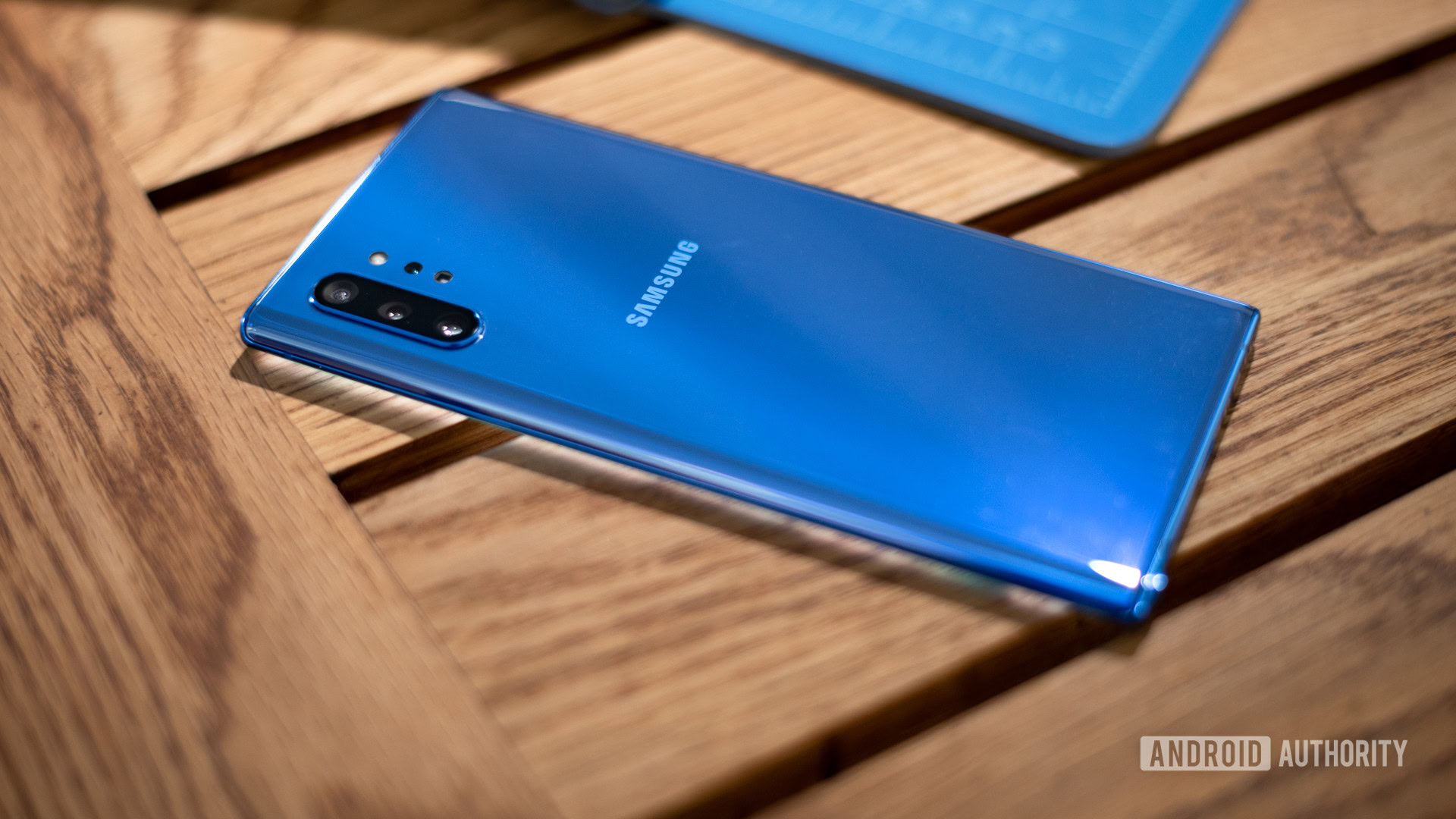
The Galaxy Note 10 and 10 Plus are here, and now it’s time to see how they stack up against the competition. In this quick versus we compare the two with the Pixel 3 and 3 XL in terms of specs to see the differences and similarities, which will help you decide the right device for your needs.
Let’s start by taking a closer look at Samsung’s flagship phones. The Note 10 Plus is the better of the two, sporting a massive 6.8-inch display with QHD+ resolution, curved edges, and a small punch hole that houses the front-facing 10MP camera. It packs the Snapdragon 855 or the newly announced Exynos 9825 chipset under the hood — depending on the market — along with 12GB of RAM. It comes with either 256 or 512GB of high-speed UFS 3.0 memory that can be expanded with the help of a microSD card.
Moving on to the rear cameras, you get four sensors on the Galaxy Note 10 Plus. The phone features an ultra-wide 16MP shooter, a wide-angle 12MP shooter with variable aperture, a 12MP telephoto lens, and a VGA depth camera sensor. We haven’t tested out the setup properly yet, but it looks very promising on paper.
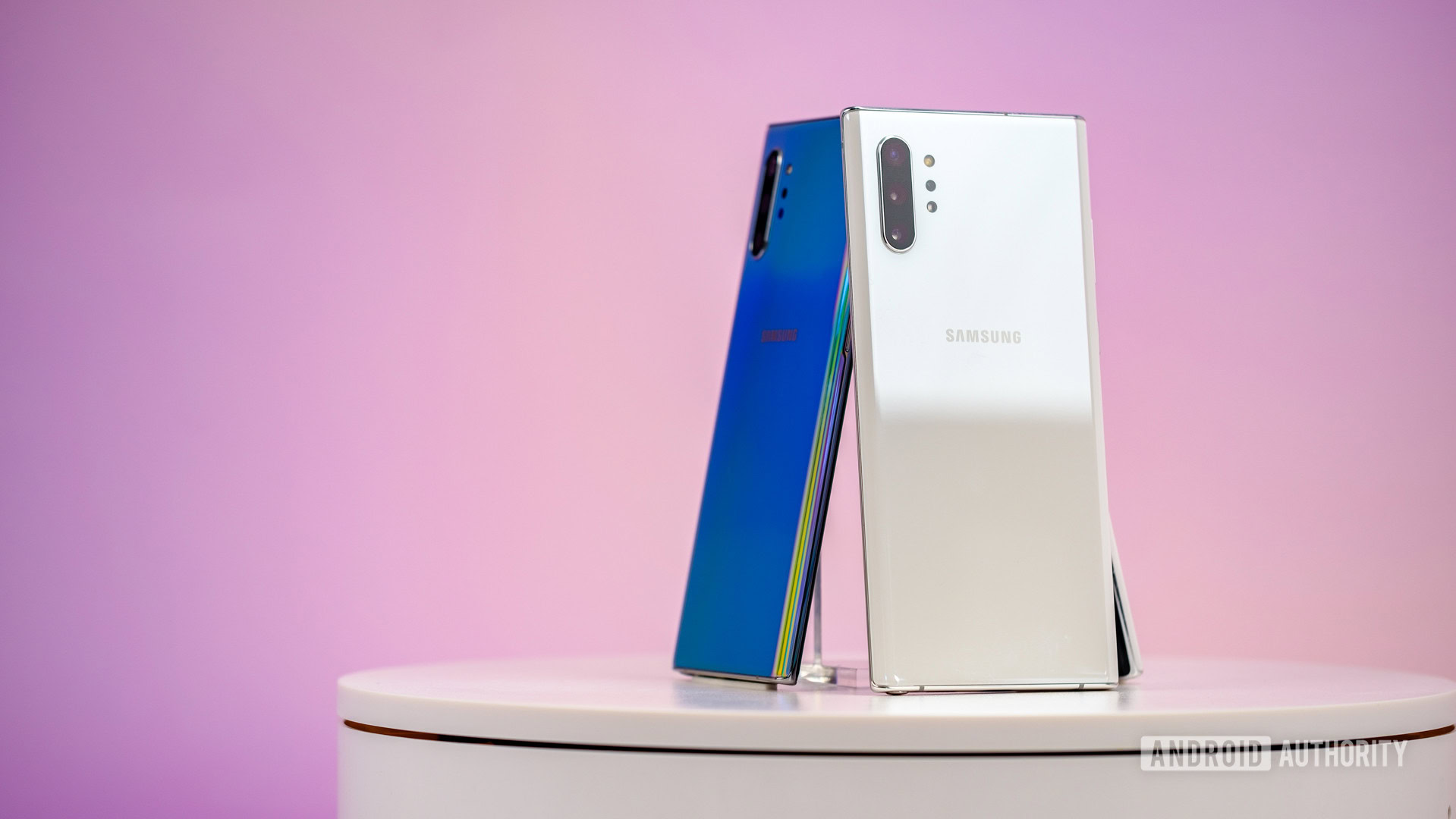
The battery of the device comes in at 4,300mAh and supports fast charging (25 watts for the Note 10, and 45 watts for the Note 10 Plus) as well as wireless fast charging at 12 watts for the smaller phone and 15 watts for the Plus model. There’s also reverse wireless charging on board.
The flagship sports an ultrasonic in-display fingerprint scanner, an IP68 rating, and the S Pen, which is what makes it stand out from the crowd. Samsung’s stylus has a few new tricks up its sleeve including Air Actions, which lets you zoom the camera or even swipe through your gallery. However, unlike its predecessor, the phone does not have a headphone jack.
The Note 10 Plus runs Android Pie with Samsung’s One UI on top, which adds a bunch of extra features to the phone. These include Secure Folder, Game Launcher, and Dual messenger, to name a few — you can check out the rest here.
The Galaxy Note 10 is similar to the Plus model in many ways. It has the same chipset, cameras, and a few other features including the in-display fingerprint scanner and IP rating. The main difference is that it sports a smaller 6.3-inch display with a lower Full HD+ resolution. It also has a smaller 3,500mAh battery, slightly less RAM at 8GB, and lacks microSD card support. The Note 10 comes with 256GB of storage like its bigger brother, but there’s no 512GB option. 5G versions of both phones will be available, although the Note 10 will only launch in South Korea, while the Plus model will come to the U.S.
| Samsung Galaxy Note 10 | Samsung Galaxy Note 10 Plus | |
|---|---|---|
Display | Samsung Galaxy Note 10 6.3-inch Dynamic AMOLED Infinity-O 2,280 x 1,080 resolution 401ppi HDR10+ | Samsung Galaxy Note 10 Plus 6.8-inch Dynamic AMOLED Infinity-O 3,040 x 1,440 resolution 498ppi HDR10+ |
SoC | Samsung Galaxy Note 10 Global: Samsung Exynos 9825 U.S.: Qualcomm Snapdragon 855 | Samsung Galaxy Note 10 Plus Global: Samsung Exynos 9825 U.S.: Qualcomm Snapdragon 855 |
RAM | Samsung Galaxy Note 10 8GB (LTE model) 12GB (5G model, Korea only) | Samsung Galaxy Note 10 Plus 12GB |
Storage | Samsung Galaxy Note 10 256GB No microSD card slot UFS 3.0 | Samsung Galaxy Note 10 Plus 256/512GB microSD card slot UFS 3.0 |
Cameras | Samsung Galaxy Note 10 Rear Ultra-wide: 16MP sensor, ƒ/2.2 aperture, 123-degree field-of-view Wide-angle: 12MP sensor, Dual Pixel autofocus, ƒ/1.5+ƒ/2.4 apertures, OIS, 77-degree field-of-view Telephoto: 12MP sensor, ƒ/2.1 aperture, OIS, 45-degree field-of-view Front 10MP sensor, Dual Pixel autofocus, ƒ/2.2 aperture, 80-degree field-of-view | Samsung Galaxy Note 10 Plus Rear Ultra-wide: 16MP sensor, ƒ/2.2 aperture, 123-degree field-of-view Wide-angle: 12MP sensor, Dual Pixel autofocus, ƒ/1.5+ƒ/2.4 apertures, OIS, 77-degree field-of-view Telephoto: 12MP sensor, ƒ/2.1 aperture, OIS, 45-degree field-of-view Depth Vision camera: VGA, ƒ/1.4 aperture, 72-degree field-of-view Front 10MP sensor, Dual Pixel autofocus, ƒ/2.2 aperture, 80-degree field-of-view |
Battery | Samsung Galaxy Note 10 3,500mAh | Samsung Galaxy Note 10 Plus 4,300mAh |
IP rating | Samsung Galaxy Note 10 IP68 | Samsung Galaxy Note 10 Plus IP68 |
Software | Samsung Galaxy Note 10 Android 9 Pie Samsung One UI | Samsung Galaxy Note 10 Plus Android 9 Pie Samsung One UI |
Dimensions and weight | Samsung Galaxy Note 10 151 x 71.8 x 7.9mm 168g | Samsung Galaxy Note 10 Plus 162.3 x 77.2 x 7.9mm 196g |
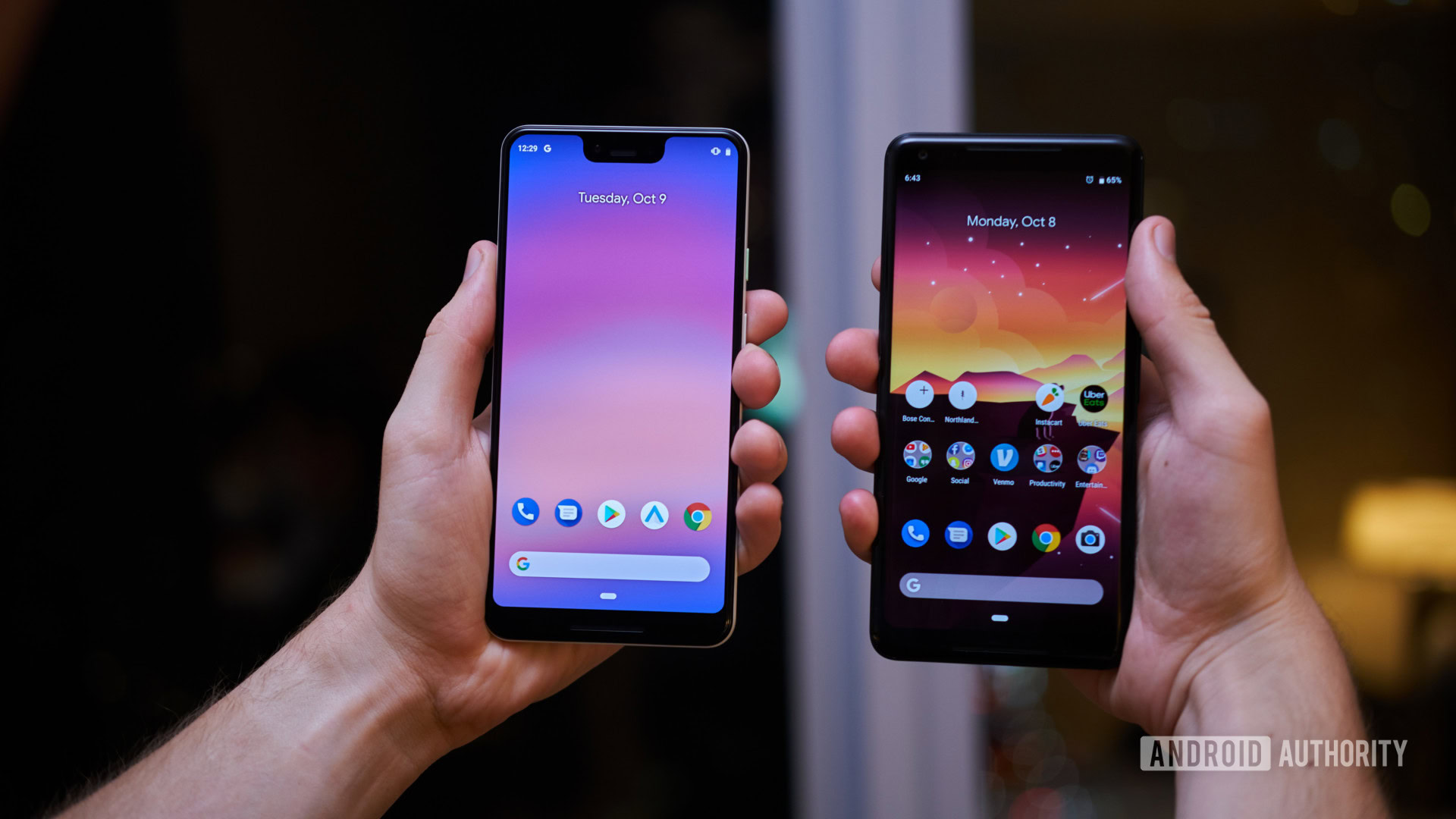
So, how do these specs and features compare to the Pixel 3 series? The XL model sports a 6.3-inch QHD+ display with a notch, making it the same size — but of a higher resolution — as the Galaxy Note 10’s display, but quite a bit smaller than the Note 10 Plus. It doesn’t have curved edges, which can either be a good or a bad thing depending on your preference. The Pixel 3, on the other hand, has a much more compact 5.5-inch display with Full HD+ resolution and doesn’t have a notch.
In terms of power, the Pixel 3 phones offer less than Samsung’s latest flagship series, though that’s not surprising given they are almost a year old now. Both are powered by the Snapdragon 845 chipset, which is still capable of handling just about any task you throw at it, but it’s not quite as fast as the Note 10’s Snapdragon 855. The bigger issue is the RAM. While the 12GB you get with the Note 10 Plus is an overkill at this point, it’s still way better than the 4GB you get with the Pixel phones — especially if you plan on keeping the device for years and years. The Galaxy Note 10 sits in between with a much more reasonable 8GB of RAM.
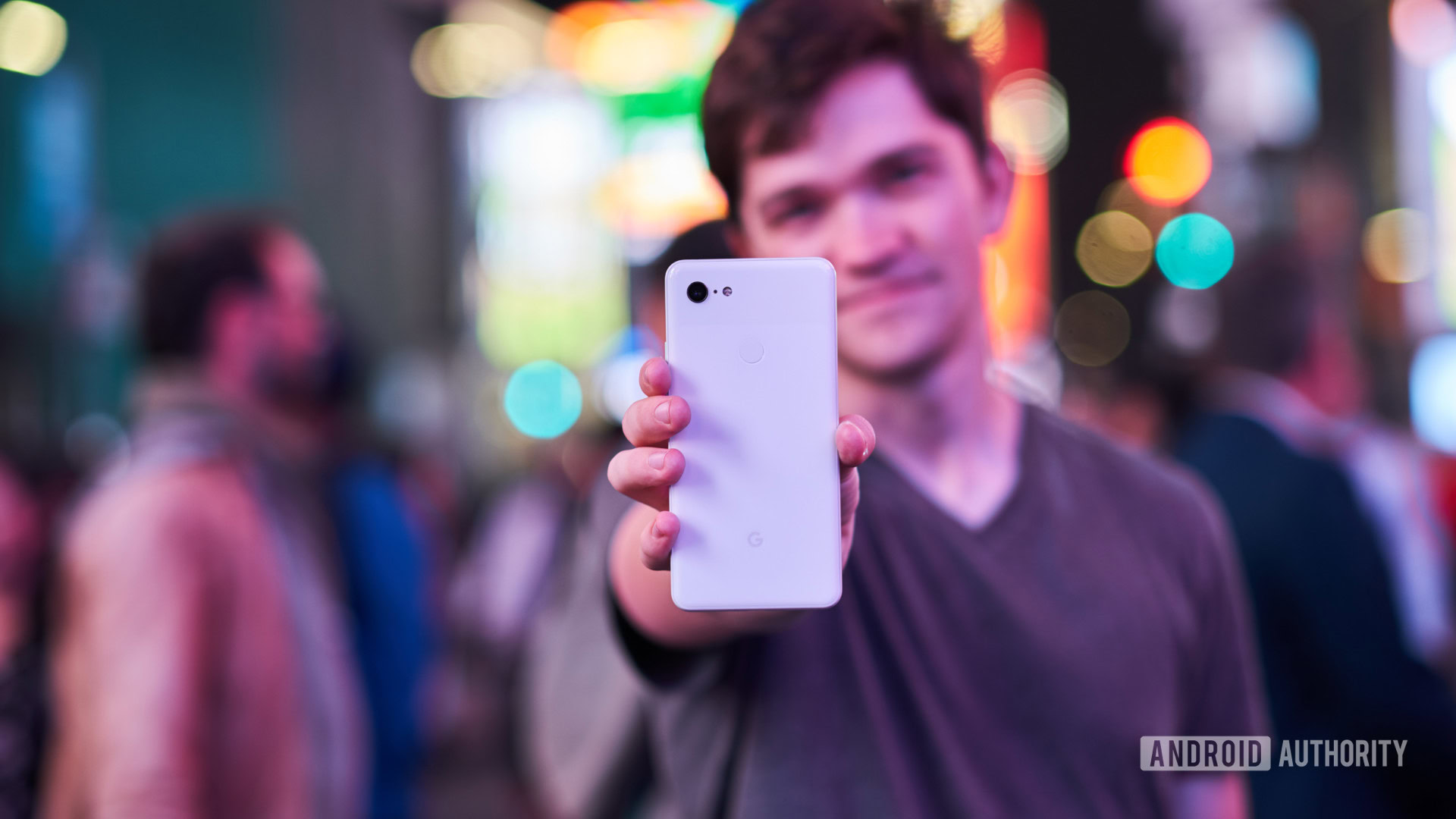
You also get less storage with the Pixel 3 phones. You can choose between 64 and 128GB versions, and there’s no support for expandable storage. There’s also no headphone jack on board, same as with the Note 10 phones.
Now let’s talks cameras. The Pixel 3 phones sport two on the front (dual 8MP), but only one on the back. Regardless, they are among the best camera phones on the market at the moment. The 12.2MP sensor captures brilliant images, especially in low-light conditions thanks to Google’s Night Sight technology. As already mentioned, we haven’t properly tested out the Galaxy Note 10’s camera setup, but based on what the S10 Plus brings to the table, this is still an area where the Pixel phones are a step ahead of Samsung’s offering.
The battery of the XL model comes in at 3,430mAh, making it smaller than those of both Note 10 devices. The Pixel 3’s battery capacity is even smaller at 2,915mAh, but the phone has a smaller footprint as well. Both handsets support fast charging at 18 watts, which is much slower than what you get with Samsung’s flagships.
The Pixel 3 and 3 XL have a rear-mounted fingerprint scanner instead of an in-display one like the Note 10. It’s less fancy, but it should be faster and more reliable based on experience. Both phones are also IP68 rated for protection against water and dust, just like their rivals. They run a stock version of Android Pie, which means there’s no bloatware to be found on the handsets and that they will be among the first to receive OS updates. But at the same time, you’re also missing out on the extra features skins like Samsung’s One UI add to devices.
| Google Pixel 3 | Google Pixel 3 XL | |
|---|---|---|
Display | Google Pixel 3 5.5-inch P-OLED 2,160 x 1,080 resolution 443ppi | Google Pixel 3 XL 6.3-inch P-OLED 2,960 x 1,440 resolution 523ppi |
Processor | Google Pixel 3 Qualcomm Snapdragon 845 | Google Pixel 3 XL Qualcomm Snapdragon 845 |
RAM | Google Pixel 3 4GB | Google Pixel 3 XL 4GB |
Storage | Google Pixel 3 64/128GB No microSD slot | Google Pixel 3 XL 64/128GB No microSD slot |
Cameras | Google Pixel 3 Rear: 12.2MP f/1.8 sensor, 1.4 micron pixels, OIS and EIS, spectral and flicker sensor Front: Main: 8MP standard angle (75 degree FOV) f/1.8 auto-focus sensor Secondary: 8MP wide-angle (97 degree FOV) f/2.2 fixed-focus sensor | Google Pixel 3 XL Rear: 12.2MP f/1.8 sensor, 1.4 micron pixels, OIS and EIS, spectral and flicker sensor Front: Main: 8MP standard angle (75 degree FOV) f/1.8 auto-focus sensor Secondary: 8MP wide-angle (97 degree FOV) f/2.2 fixed-focus sensor |
Battery | Google Pixel 3 2,915mAh | Google Pixel 3 XL 3,430mAh |
IP rating | Google Pixel 3 IP68 | Google Pixel 3 XL IP68 |
Software version | Google Pixel 3 Android 9 Pie | Google Pixel 3 XL Android 9 Pie |
Dimensions and weight | Google Pixel 3 160.1 x 76.1 x 8.2mm 167g | Google Pixel 3 XL 158.0 x 76.7 x 7.9mm 184g |
Galaxy Note 10 vs Pixel 3: And the winner is…
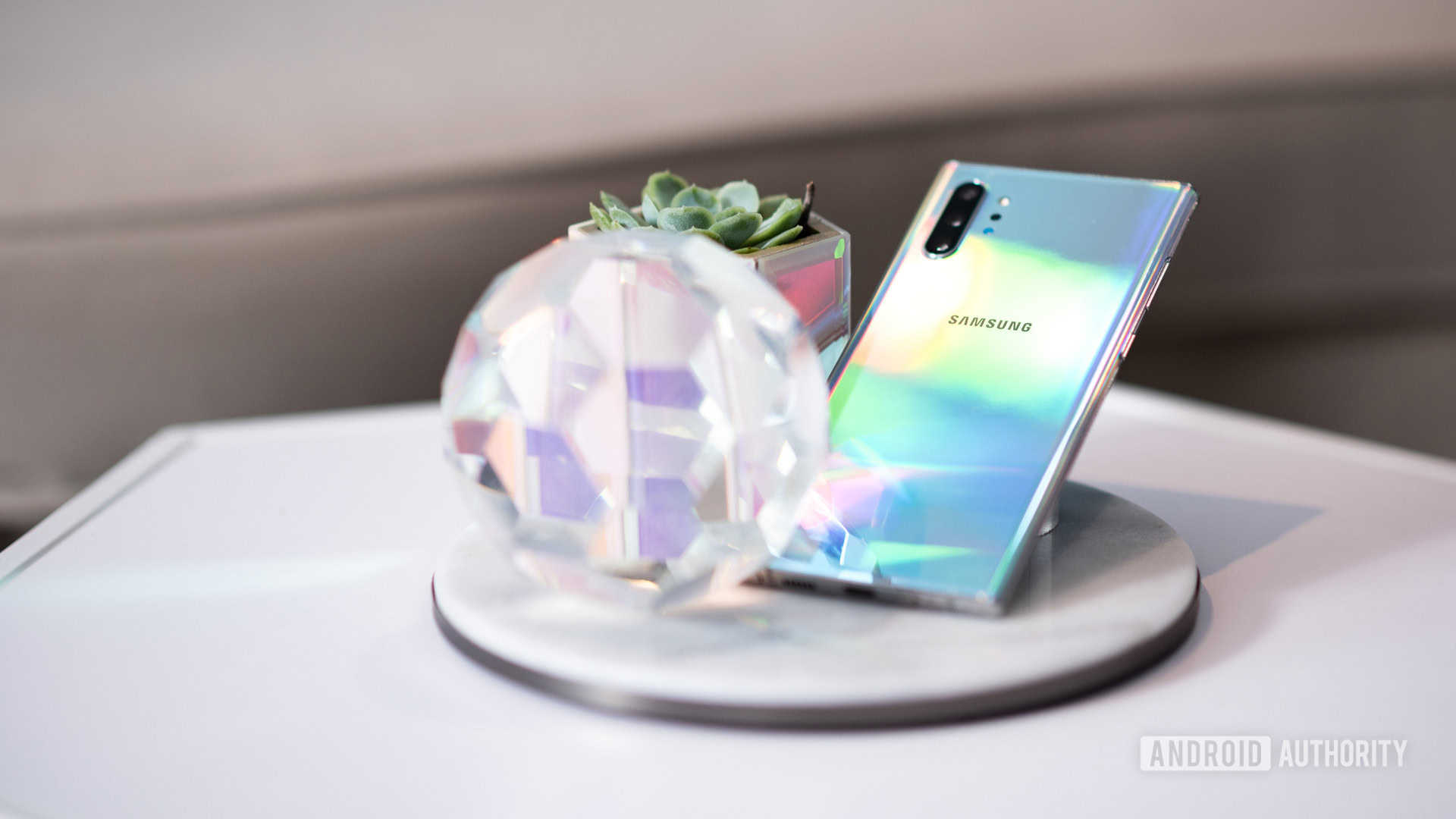
Overall, the Galaxy Note 10 phones offer more than the Pixel 3 and 3 XL — there’s no doubt about that. You get a newer and better chipset, more RAM, more storage, bigger batteries with faster charging, expandable storage (Note 10 Plus model only), and the option of 5G connectivity. You also get the Note’s signature S Pen and extra features like reverse wireless charging. So, if you want as much power and as many features in a smartphone as possible, the Note 10 phones are much better options than the Pixel 3 and 3 XL.
However, there are three major reasons why you should consider one of the Pixel 3 phones over Samsung’s latest flagships. The first one is the camera. Although we haven’t fully tested out the cameras on the Note 10, it will be hard to top the Pixel 3’s main shooter. The Pixel 3 and 3 XL truly are among the best phones for those who are into photography. On the other hand, the Note 10’s camera setup does offer more versatility due to having more sensors. Like most flagship camera setups, it should perform great when there’s plenty of light, but it likely won’t be able to match the Pixel 3 in low-light conditions.
The Note 10 is clearly the champion in most aspects, though the Pixel 4 may even this comparison up when it arrives.
The second reason to get a Pixel over a Note is the software. Google’s phones offer a clean, bloat-free experience. Samsung’s UI has improved significantly in recent iterations but there’s still likely to pre-installed apps and extras you’ll likely never use and can’t delete from the phone. Pixel handsets will also get the latest version of Android on day one, while you’ll have to wait months to get it on the Note.
Lastly, there’s the price. The Pixel 3 and 3 XL may offer less power and features than the Note 10 phones, but they are also cheaper, especially now that they’ve been on the market for quite some time. Google is currently selling the Pixel 3 for $500, while the Pixel 3 XL goes for $100 more. The Galaxy Note 10 and 10 Plus are much more expensive. The smaller of the two retails for $950, while the Plus model will set you back a whopping $1,100. Whether the high price tag is worth it or not depends on your wants and needs.
Another thing to consider is the Pixel 3’s age. If you are at all tempted by the Pixel 3 over the Note 10, it might be worth waiting a few months for the Pixel 4 to arrive. Google’s upcoming flagship should match or exceed the Note 10 family in nearly every aspect. Of course if you’re tempted by the S-Pen, the huge display, and all the bells-and-whistles of the Note family, the Pixel family isn’t likely to scratch your itch.